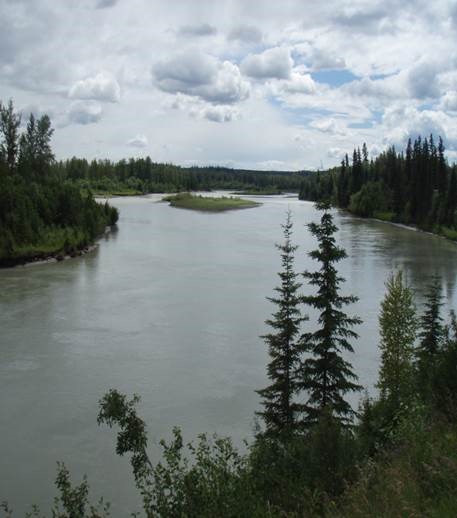New framework for the Athabasca River falls short
Alberta’s Athabasca River is one of North America’s longest remaining free-flowing rivers. Traveling from the Columbia ice fields to Lake Athabasca, it provides habitat for half of the province’s fish species and feeds the Peace-Athabasca Delta, one of the world’s largest freshwater deltas, home to Wood Buffalo National Park, and among the most important waterfowl nesting areas in North America.

This UNESCO World Heritage site is one of the great Canadian rivers WWF is committed to protect – as part of our goal to ensure the good ecological health of all Canada’s waters by 2025. It’s also one of 17 rivers WWF has assessed to date, piloting the first-ever methodology to measure river health at a national scale.
Today, the Alberta government announced a long-awaited policy intended to improve river management of the lower Athabasca – a portion of the river that also supplies water to the province’s oilsands industry. Unfortunately for the Athabasca, its wildlife, communities and ecosystems, this new framework falls short.
The Surface Water Quantity Framework for the Lower Athabasca River was created to govern water withdrawals by the oilsands mining industry. After years of negotiation, WWF, Alberta Wilderness Association, South Peace Environment Association and the Pembina Institute are disappointed to see one very significant flaw: This new framework fails to require the establishment of a minimum protective ecosystem-based flow (EBF) for the Athabasca.
This means that without this protection, no matter how low the river flow becomes, some oil companies are allowed to extract water – putting aquatic ecosystems at risk.
Simply put, setting a minimum protective flow means leaving enough water in a river for nature’s needs. We need to protect this threshold beyond which further water withdrawals would pose an unacceptable risk to the health of wildlife, habitats and the river itself. Adopted in other river basins in British Columbia, the United States and New Zealand, this protection is a fundamental component of any water management plan designed to meet social, economic and environmental interests.
Alberta’s new management framework for the lower Athabasca River is a missed opportunity to protect the long-term health of a large and important waterway, its mammals, fish, and migratory waterfowl.
Water for nature must be protected in all of Canada’s rivers. Good river management will be a crucial component in reaching WWF’s goal to ensure Canada’s water health by 2025.
See the full statement and release here.

